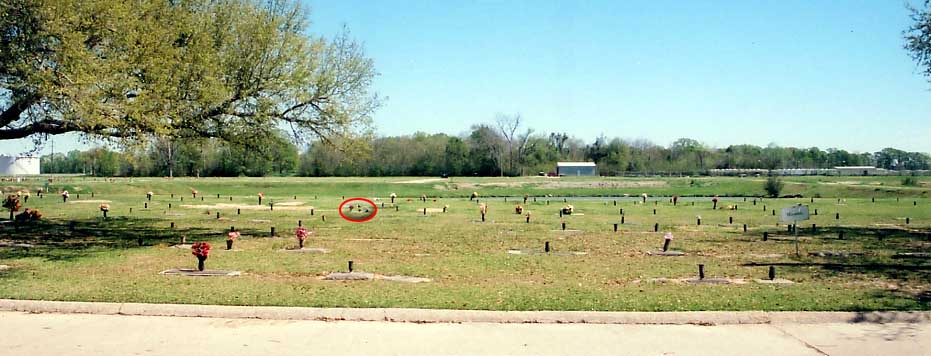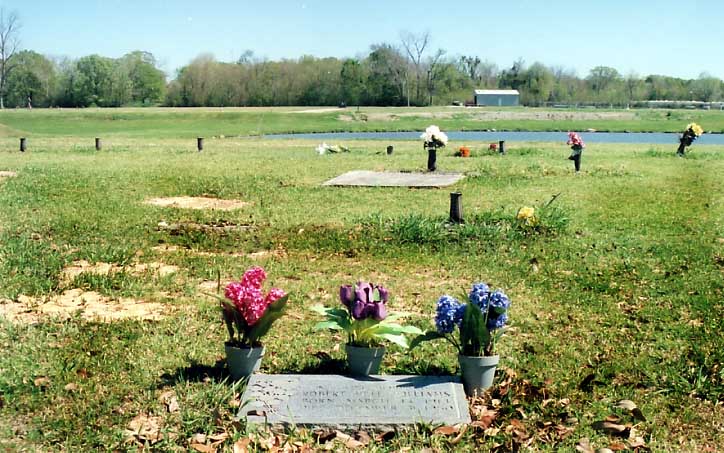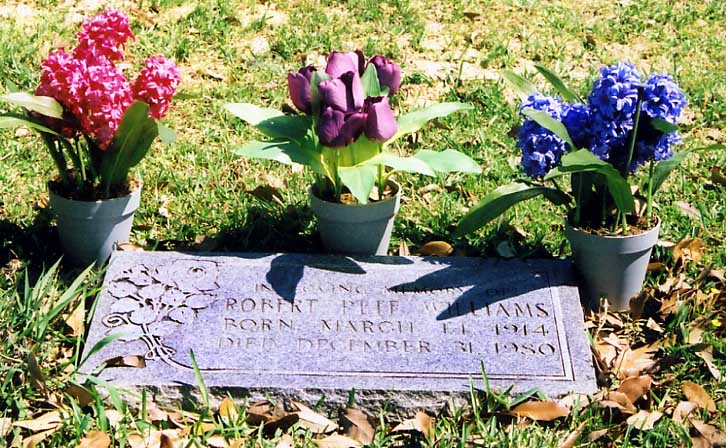
Who is Robert Pete Williams and what is his significance? Robert
Pete was born in 1914 and spent his early adulthood working at
a lumberyard while playing music in passing. In 1954, Robert was
involved in a barroom brawl which he ended up killing another
man. Robert Pete claimed it was in self-defense. The court felt
otherwise, and Robert was sent to Angola for life.
Come
1958, Harry
Oster, then a graduate student at LSU English Dept, was
up at Angola "collecting" Negro work songs. One of Harry's
informants told him about Robert Pete, so Harry checked Robert
Pete out and realized he had something significant on his hands.
Harry brought Robert Pete a new guitar, and focused on recording
Robert Pete's playing (the recording sessions would later lead
to two albums worth of material).
Harry Oster also
started on the process of getting Robert Pete pardoned. Harry
sent letters to the Louisiana governor, the parole board, newspapers,
magazines (Time carried an article about Robert Pete's music and
trial in an October 1958 edition). Shortly there after, the Louisiana
parole board commuted Robert Pete Williams sentence to 12 years.
With 4 years served, Robert Pete was released from Angola, but
still was restricted to a "servitude parole" (He had
to work on a state farm out near Denham Springs, east of Baton
Rouge, and couldn't leave Louisiana). That lasted till 1964. Afterwards,
Robert Pete Williams was free to tour and perform (his coming
out party being the 1964 Newport Folk Festival).
The
significance of Robert Pete's playing was that it was different.
Harry Oster described Robert Pete's playing "as close to
pure folk tradition as anyone of his generation." Jimmy Beyer
described Robert Pete's music as not staying in the traditional
12 bars. Elijah Wald wrote about Robert Pete's playing, "He
played music derived from the field holler tradition and, by extension,
is closely tied to African roots. His songs were usually improvised,
unrhymed and in no particular metric pattern, and his guitar tended
to function as a rough second voice." Milo Miles compared
Robert Pete Williams playing to Big Joe Williams, John Lee Hooker,
and Ali Farka Toure (and Fat Possum compares Robert Pete to Junior
Kimbrough).
That is why our world became less whole
when Robert Pete Williams passed away on the next to last day
of 1980.
Fast forward to Winter 2006, I received an e-mail from a Don Ely, from Michigan, saying he found the gravemarker for Robert Pete Williams, with help from the liner notes from " When A Man Takes The Blues ", Robert Pete Williams vol. 2 (Arhoolie cd 395) at the back of Southern Memorial Gardens. So with the help of Don's directions I made my up to the outskirts of Scotlandville (North Baton Rouge, you could say). Blount Rd is the lst traffic light on both US 61 and La 19, north of I-110; turn right and proceed east past some houses and you'll see an oil tank yard on your left, and BR Airport on your distant right, with the cemetery entrance in front.




Thanks again to Don Ely for providing me the information that lead me to finding Robert Pete Williams' grave.
Sources for background on Robert Pete Williams
"biography"
Baton Rouge Blues
by Jimmy Beyer (pub. 1980)
Living
Country Blues by Harry Oster (pub. 1969/1975)
Arhoolie Records
Link
Fat Possum Records Link
Keith
Purtell
Page created on April 18, 2006/ last updated on April 20,
2006
Questions and comments can be directed to
Sandor Gulyas
Return
to Baton Rouge Blues Page